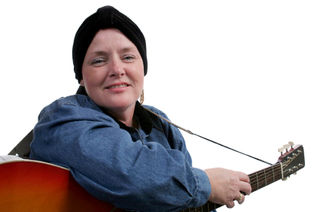Grief
Building Bridges: Music Therapy in Hospice Care
Music therapists provide more than a "feel good" space for the terminally ill
Posted March 8, 2016

A beautiful story was published in People magazine recently about a music therapist at Cincinnati Children’s hospital who composes “heartbeat songs” for his clients and their family. These particular clients are unique—they all receive hospice services, meaning these children were given a prognosis of six months or less to live.
Music therapist Brian Schreck starts by recording his client’s heartbeats, then he uses the rhythmic track as the foundation for each composition. When possible, songs are composed in collaboration with the child and family. According to Schreck, the purpose of this music-based intervention is to help parents prepare for and cope with their grief and loss, as well as provide them with musical memories of their child.
This is just one example of the touching and important care hospice music therapists provide. The practice of including music therapy as a hospice and palliative care treatment option began to grow significantly beginning in the 1990s. Music therapists can contribute to the care of a hospice client in many ways, such as providing:
- Symptom management, including pain reduction
- Anxiety management
- Emotional support, particularly in addressing and alleviating feelings of fear, depression, and loneliness
- Grief and loss processing for the client and the family
- Life review (or the making sense of one’s life, life work, and purpose)
- Spiritual support
- Psychosocial support, particularly through facilitating meaningful interactions with loved ones
In this capacity, music often seems to function as a bridge for the client—a bridge to processing difficult feelings and emotions, a bridge to feeling support from others, a bridge to a feeling less pain and anxiety, even a bridge to sharing a part of him- or herself with loved ones.
Brian Schreck facilitated the building of bridges through writing songs that connect with a very intimate biological process—the heartbeat. Other hospice music therapists facilitate bridge-building by providing clients opportunities to share in a music experience. This may involve singing together, playing instruments together, sharing favorite songs, or sometimes simply listening. These shared music experiences may lead to processing feelings grief and sadness, but they can also lead to laughter, smiles, and to feeling close and connected with one another.
A good friend of mine worked with pediatric hospice clients in southern Florida for several years. And I’ll never forget her statement of how she viewed the work she did: her job was to create memories.
Create memories. Build bridges. Connect through music.
What a beautiful tribute.
Follow me on Twitter @KimberlySMoore for daily updates on the latest research and articles related to music, music therapy, and music and the brain. I invite you also to check out my website, www.MusicTherapyMaven.com, for additional information, resources, and strategies.


